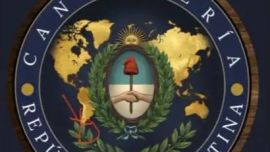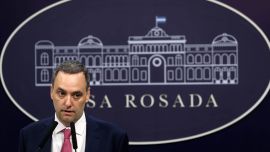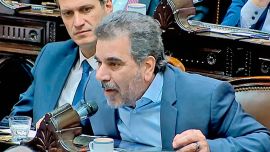The United States has slapped sanctions on nine key Iranian officials reporting to Supreme Leader Ali Khamenei, including his son, and called on the Islamic Republic to release US citizens believed to be held in the country.
On the 40th anniversary of the Iranian hostage crisis, the US said the officials include those involved in terrorist attacks in Lebanon and Argentina – specifically the 1994 bombing of the Argentine Israelite Mutual Association (AMIA) Jewish community centre in Buenos Aires, which saw 85 killed, making it the country's deadliest terrorist attack to date.
The targeted individuals include a number of prominent Iranians, among them judiciary chief Ebrahim Raisi and Ali Akbar Velayati, a senior foreign policy advisor to Khamenei.
Velayati, who served as Iran's foreign minister from 1981-1997, is wanted in Argentina in connection with the 1994 AMIA bombing.
After a decade-plus of allegations surrounding corruption, cover-ups and mishandling of information, Argentina officially accused the Iranian government and Hezbollah, the Lebanese Shiite militant group with close ties to Tehran, ith executing the AMIA attacks. Argentina recently officially recognised as a terrorist group this year.
Cristina Fernández de Kirchner, the vice president-elect, is one government official who continues to be marred in controversy surrounding the investigation. She's been referred to public trial for being part of a cover-up of Iran's investigation.
Justice remains undelivered to the families of victims.
Three Trump administration officials, briefing reporters on condition of anonymity, also announced a US$20 million reward for information leading to the return of American Robert Levinson, a former FBI agent who disappeared in 2007.
“Today the Treasury Department is targeting the unelected officials who surround Iran’s Supreme Leader, Ayatollah Khamenei, and implement his destabilising policies,” Treasury Secretary Steven Mnuchin said in a statement. “These individuals are linked to a wide range of malign behaviours by the regime, including bombings of the US Marine Barracks in Beirut in 1983 and the Argentine Israelite Mutual Association in 1994, as well as torture, extrajudicial killings, and repression of civilians.”
The move comes as tensions between Washington and Tehran remain high over the breakdown of the 2015 Iran nuclear accord and military maneuvers in the Persian Gulf region. Iranian nuclear chief Ali Akbar Salehi on Monday said Iran has increased the number of advanced centrifuges it is running to enrich uranium and additional milestones in the country’s nuclear program may be announced later this week.
Iran has been scaling back its compliance with the beleaguered 2015 deal since May as it resists the “maximum pressure” offensive of President Donald Trump, who unilaterally left the accord last year and later imposed sweeping economic sanctions including the total ban on oil sales.
But the troubled history between the two countries dates back to at least the Carter administration.
The taking of more than 50 diplomats at the US Embassy in Tehran in November 1979 became a defining moment in US-Iran relations for more than a generation. The two countries have not had diplomatic relations since the hostage crisis, which ended 444 days after it began.
With an economic crisis looming, Iran announced on May 8 it would gradually withdraw from the nuclear agreement unless the remaining parties find a way to ease its pain. It first stopped complying with a 300-kilogram cap on the storage of enriched uranium and heavy water imposed by the multilateral accord, and then broke the 3.67 percent limit on uranium purity.
While officials have said the country will “set aside” restrictions on uranium enrichment, it has so far held off enriching to anywhere near 20 percent, the level required for research reactors. Weapons-grade uranium needs to have an enrichment level of 90 percent or higher.
--BLOOMBERG/TIMES
) .


















Comments